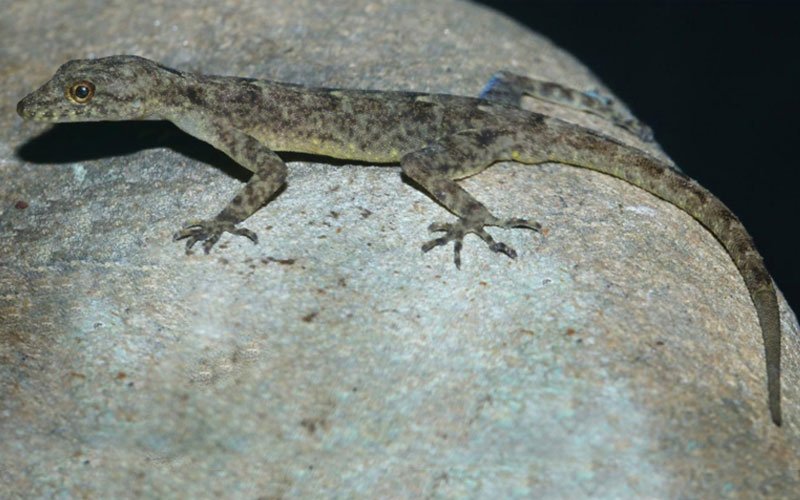Major breakthrough in Assam’s biodiversity documentation
Guwahati, July 15, 2025:
In a landmark discovery for Indian herpetology, a new species of day gecko has been identified along the banks of the mighty Brahmaputra River. Named Cnemaspis brahmaputra, this remarkable reptile marks only the second species of its kind recorded in Northeast India.
Assam Chief Minister Himanta Biswa Sarma took to X (formerly Twitter) earlier today to share the exciting news.
“New addition to Assam’s rich biodiversity! A new species of day gecko has been discovered on the banks of Brahmaputra & named Cnemaspis brahmaputra. This is only the 2nd species of such kind recorded in Northeast. Congratulations to all the researchers behind this discovery,” he posted.
The discovery was documented in a research article published on July 12, 2025, in Taprobanica, a leading journal on Asian biodiversity. The peer-reviewed article is titled “A New Day Gecko of the Cnemaspis podihuna (Reptilia: Gekkonidae) Clade from Northeast India.”
The Team Behind the Discovery
The research was conducted by a multi-institutional team comprising:
- Amit Sayyed from the Wildlife Protection & Research Society, Maharashtra
- Madhurima Das and Rupankar Bhattacharjee from Assam Don Bosco University
- Jayaditya Purkayastha of Help Earth, Guwahati
- A.A. Thasun Amarasinghe from the Research Center for Biosystematics and Evolution, Indonesia
Where Was It Found?
The newly described gecko was discovered near the banks of the Brahmaputra River in Assam. These lizards are typically diurnal (active during the day), small-sized, and are known for their ability to camouflage against tree bark and rocks. This makes their discovery particularly challenging and significant.
What Makes Cnemaspis brahmaputra Unique?
This species belongs to the Cnemaspis podihuna clade, a group of day geckos that are typically endemic to isolated regions in Asia. The brahmaputra variant exhibits distinct morphological traits, including scalation, body pattern, and coloration that distinguish it from other known Cnemaspis species.
Conservation & Biodiversity Boost
The discovery not only adds to the herpetofaunal diversity of Assam but also highlights the ecological significance of riverine and forested landscapes along the Brahmaputra. Experts believe this reinforces the urgent need to preserve these fragile habitats amid rapid urbanization and climate change.
Published Details
The scientific paper was submitted in February 2025, accepted in June, and published on July 12, 2025. It is available open access through the journal Taprobanica, under the Creative Commons license (CC-BY 4.0).
Read the full research here: https://doi.org/10.47605/tapro.v14i2.363
Reactions Pour In
The scientific and conservation communities have lauded the discovery as a step forward in biodiversity research in Northeast India. Environmental groups hope this will increase awareness and funding for field research and conservation in the region.



